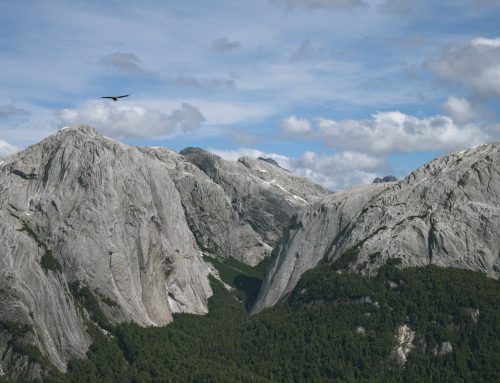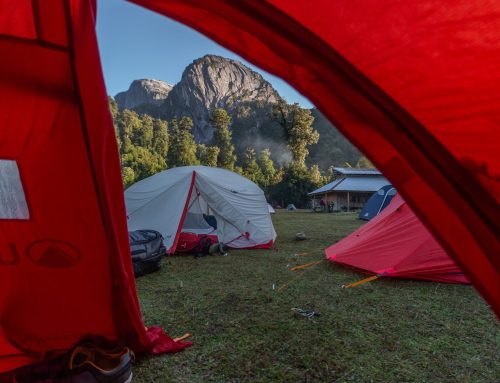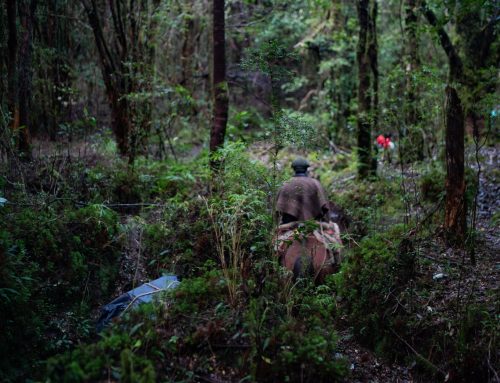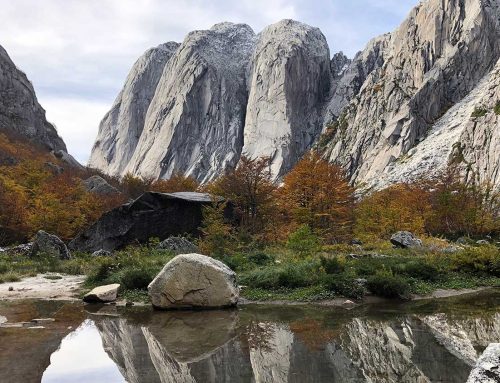Last week, the results of a participatory wildlife monitoring program conducted in the Cochamó Valley were released, which includes part of the 133,000 hectares of private land owned by Conserva Puchegüín, an initiative that seeks to purchase the property in order to protect it. The 24 camera traps, which were installed for more than 4 months at the site, were able to capture 31 native species, including the Güiña, the Monito del Monte and the Patagonian Vizcacha. The expert in charge of the research assures that the conservation of the habitat of these species will be vital for their protection.
As part of the Participatory Fauna Monitoring program, the NGO Puelo Patagonia together with the Andean Club and the Cochamó Valley Organization, were able to monitor 31 species of fauna in the Cochamó Valley, located in the Los Lagos Region. Güiña, Puma, Black Woodpecker and Culpeo Fox, are part of the records of the 24 camera traps installed in December 2023 and removed at the end of March 2024 by the members of these three local organizations, which were distributed in different strategic points of the valley with special emphasis on finding the Patagonian Vizcacha. (Lagidium wolffsoni): a rodent for which there are few records and information in Chile.

The Patagonian Vizcacha or Orange Chinchillon (Lagidium wolffsoni): distinguished by its large ears and bushy tail, with a thick coat that varies between shades of brown and gray. Their hind legs are particularly robust and are adapted to jump and climb easily on rocky terrain. Its main diet consists of grasses and herbs, although it also feeds on bark and shrub shoots when food is scarce.
Among the findings of the monitoring that attracted the most attention was that of this rodent, the Guiña (Leopardus guigna) and the Monito del Monte (Dromiciops gliroides), since all three are in danger of conservation, according to the IUCN. These three species are endemic to the temperate Andean forests of southern Chile and Argentina. Their monitoring, says Fernando Novoa, a veterinarian specializing in wildlife and expert in charge of the research for this participatory monitoring, is crucial to protect them, since “these are three mammals that can only be found in this part of the world, which makes them unique but at the same time vulnerable to any change in their habitat”.
According to Novoa, the presence of these three species is relevant because they are indicators of the well-being of their habitat, and each one fulfills an ecological role in the food chain and in the environment: “For example, in the case of the Guiña, it is a forest specialist species. That means that the forest that is there is healthy because it generates food for the Guiña to live and also to move freely. The same happens with the Monito del Monte, whose main threat historically has been the loss and degradation of its habitat,” he says.
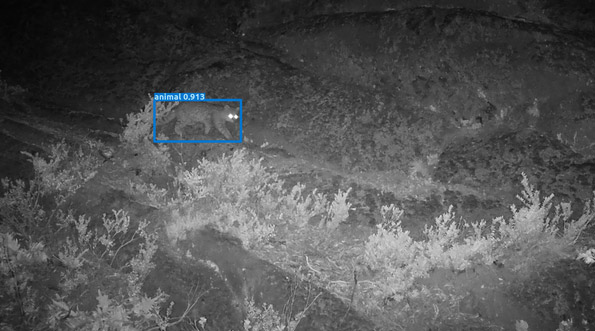
The Guiña (Leopardus guigna) also known as wiñao kod kod is one of the smallest felines in the world and the smallest in Chile. In its adult state it weighs between 1.2 and 2.2 kg.
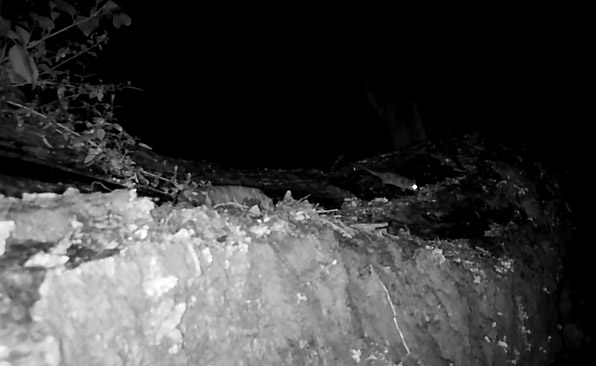
Monito del monte (Dromiciops gliroides) is considered a living fossil. At 26 centimeters, it is the largest of the four marsupials that inhabit Chile. It is characterized by its large lined eyes that adapt to the dark, its small round ears and its short coat. It is also the only mammal that hibernates in South America and does so by storing fat in its tail.
The findings of these three species are also relevant because their records were captured by cameras installed at the foot of Cerro Trinidad and in one of the trails of Cerro Anfiteatro, two areas of the valley that belong to Hacienda Puchegüín, a private territory of 133,000 hectares (corresponding to 30% of the commune of Cochamó) that has a high ecological and cultural value, and that for some weeks has made news in Chile and the world. This is after five organizations, including Puelo Patagonia, launched Conserva Puchegüín, an initiative that, through national and international donations, seeks to purchase this property, which has been for sale since 2022, in order to protect its biodiversity and traditions and implement a conservation and local development project.
According to the initiative, this place has been threatened for years by high-impact industries, so the recent records reaffirm even more its protection: “Puchegüín is a key piece in a continuous landscape of about 1,630,000 hectares of protected areas between Chile and Argentina, so conserving this place will help create one of the largest biological corridors in Latin America that will be crucial for the protection of these and other species,” says Andrés Diez, director of Puelo Patagonia and main spokesperson for the campaign.
For this, both participatory monitoring methodology and site conservation are vital, says Novoa: “Local community members play a crucial role in the installation and maintenance of a monitoring system, and their knowledge of the terrain and wildlife is fundamental to successfully recording, monitoring and protecting these species”.

Credits: Daniel Pastene
Patricia Almonacid, a member of the Cochamó Valley Organization and the Andean Club, two organizations that are part of this collaborative program, agrees. For her, the most effective way to conserve the fauna that inhabits her community is through knowledge: “By knowing the richness and biodiversity of the valley and what species exist here, we can know how to protect them better.
For this reason, the director of Puelo Patagonia emphasizes that Conserva Puchegüín considers not only the acquisition of the property, but also the development of a 7-year conservation program that includes the execution of this type of program: “The discovery of these three species confirms that this place continues to have optimal conditions for wildlife, and at the same time shows us that conservation efforts and care of the place must be maintained”.
